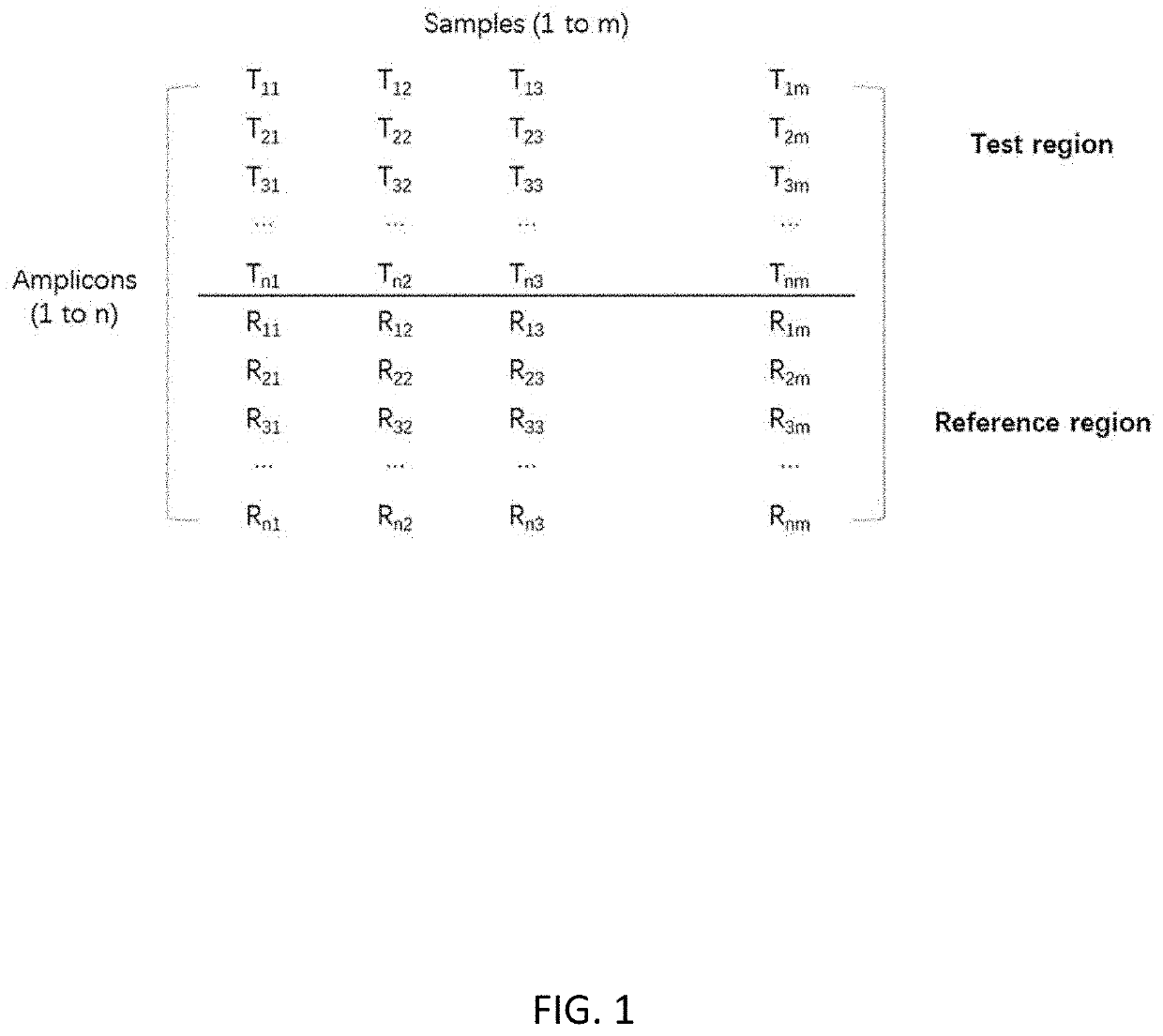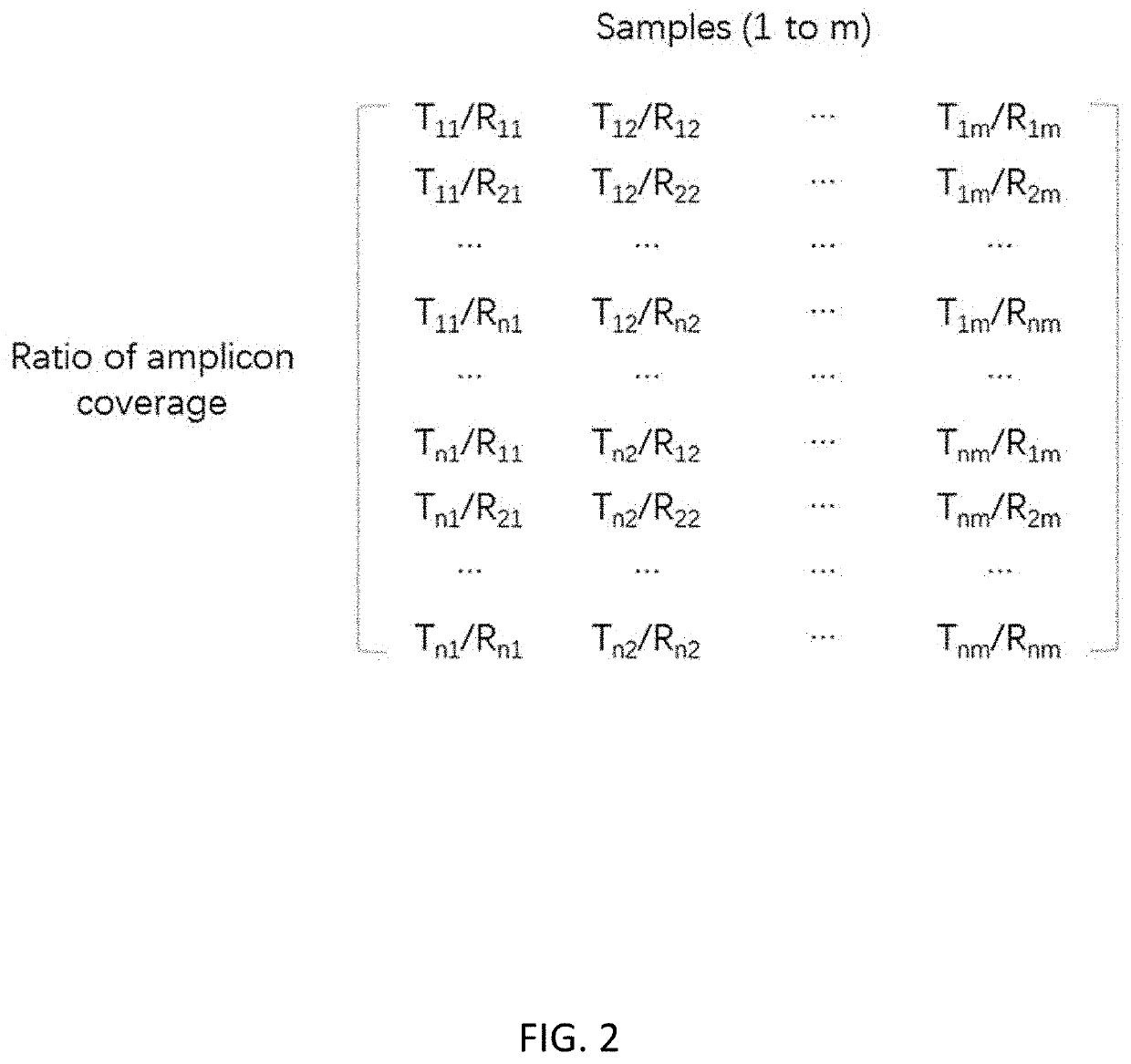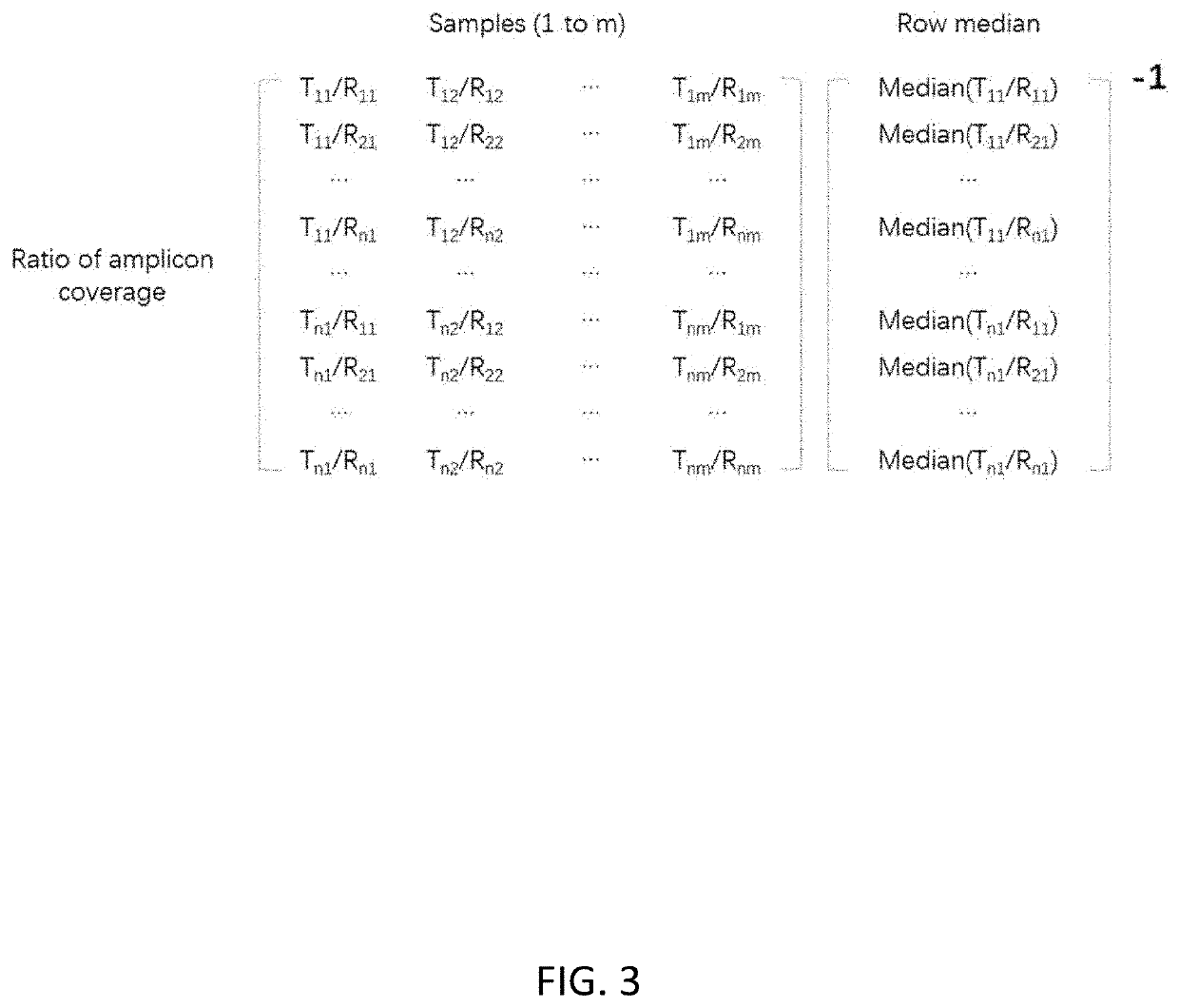Method of correcting amplification bias in amplicon sequencing
a technology of amplicon sequencing and amplification bias, applied in the field of computation methods for correcting amplification bias in amplicon sequencing, can solve the problems of affecting the accuracy of copy number calculation and hindering the application of amplicon sequencing for detection, and achieve the effect of removing amplification bias in multiplex pcr
- Summary
- Abstract
- Description
- Claims
- Application Information
AI Technical Summary
Benefits of technology
Problems solved by technology
Method used
Image
Examples
example 1
g Amplification Bias of Multiplex PCR for Fetal Aneuploidy Detection
[0088]Here we describe computational methods for correction of amplification bias and their application to non-invasive prenatal testing using maternal cell-free DNA to aid detection of fetal chromosomal aneuploidy. Amplification bias of an 1855-plex PCR was corrected to allow fetal aneuploidy detection using maternal blood with as little as 4% fetal DNA.
[0089]Correction of amplification bias for amplicon sequencing was performed as follows:[0090]1. Amplicon coverage of each tested sample is acquired; then data is entered into a matrix with each row representing each amplicon and each column representing each sample as shown in FIG. 1.[0091]2. A ratio matrix (FIG. 2) is produced from the data matrix generated in step 1 by calculating the ratio of amplicon coverage for every combination between a test genomic region and a reference genomic region. The amplicon coverage of the test region is the numerator and the ampl...
example 2
g Amplification Bias of Multiplex PCR for Pooled Plasma-DNA Samples
[0097]10 plasma-DNA samples were pooled together, then split into 10 aliquots for PCR amplification (FIG. 5). PCR bias correction was conducted as described in Example 1 with data for each aliquot processed separately, obtaining 10 individual sequencing results. Steps 1-4 of Example 1 were carried out followed by calculating the difference of amplicon GC content between each T / R pair (T denotes a locus in the test region, R denotes a locus in the reference region), obtaining an array named Diffamplicon GC, and fitting the logarithmic normalized ratio of amplicon coverage (obtained in step 4 of Example 1) and Diffamplicon GC using robust linear regression:
log(Normalized Ratio of Amplicon Cov.)=β×DiffAmplicon GC+α+ε[0098]where α denotes intercept, β denotes slope and ε denotes residual.
[0099]As mentioned above, we generated 10 replicates from the same DNA source. The existence of PCR-bias, i.e., the variation of loci c...
PUM
| Property | Measurement | Unit |
|---|---|---|
| volume | aaaaa | aaaaa |
| volume | aaaaa | aaaaa |
| volume | aaaaa | aaaaa |
Abstract
Description
Claims
Application Information
 Login to View More
Login to View More - R&D
- Intellectual Property
- Life Sciences
- Materials
- Tech Scout
- Unparalleled Data Quality
- Higher Quality Content
- 60% Fewer Hallucinations
Browse by: Latest US Patents, China's latest patents, Technical Efficacy Thesaurus, Application Domain, Technology Topic, Popular Technical Reports.
© 2025 PatSnap. All rights reserved.Legal|Privacy policy|Modern Slavery Act Transparency Statement|Sitemap|About US| Contact US: help@patsnap.com



